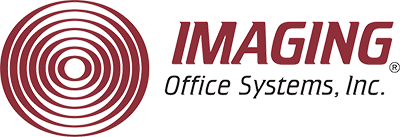Business process reengineering is not a particularly new term or methodology. In fact, it made its first appearance in an article in the 1990s, 20-some years ago.
This article was written by Michael Hammer, a computer science professor at MIT. Hammer defined business process reengineering as the act of recreating a core business process with the goal of improving product output, quality, or reducing costs.
What is business process reengineering? It’s a company’s approach to change: rethinking how technology could be used throughout their workflows to create new processes. Typically, this involves first analyzing these core workflows and identifying processes that are under-performing or inefficient and then finding technology solutions to better them.
While the term, “business process re-engineering,” may not be new, at its very foundation, it asks businesses to continually reconsider their processes in the wake of new technology solutions.
Here’s a real-world example cited in that original article: The Ford Motor Company reengineered their processes for employees in their accounts payable department by using an
online database and eliminating the need for the same action in a manual format. Previous to this change, employees spent time matching paper purchase orders with receiving documents and invoices. The company reduced its AP headcount by 75%. The process of reengineering, in this case, showed a willingness to break away from the ‘norm’ or ‘how we’ve always done things’ and reaped enormous cost-saving benefits.
How can your company start thinking within the lines of business process reengineering? In particular, how can document management and content service technologies help you re-engineer the inefficient processes in your workplace?
The six principles of business process reengineering
1. Organize around outcomes, not tasks.
This will help you stay out of the weeds and think more big-picture and goal-oriented. Perhaps, your ideal outcome is to retain X% more vendors. Start there, then look at how a centralized document management technology for your accounts payable department could help you achieve that goal.
2. Identify all the processes in your organization and prioritize them in order of reengineering urgency.
Which processes have the most significant impact on your intended outcome? This may not be a conversation about what’s “most broken,” but rather which processes have the greatest opportunity for cost-savings. Or on the flip side, think about any processes that may have the most potential repercussions if not tended to immediately.
3. Treat geographically-dispersed resources as though they were centralized.
This principle was likely a lot tougher to get your head around in the early 1990s! These days, the modern workplace isn’t strained by geography. Centralized document management gives easy (yet secure) access to critical business content, internally and externally. If one of your core issues is anytime, anywhere access to information, and streamlining the communication between departments, electronic document management solutions would help you re-engineer your workflows.
4. Link parallel activities in the workflow instead of just integrating their results.
Often, business units operate in silos and really only care about a shared result. However, if processes are inherently linked, use technology to facilitate that all the way through the workflow. Think about your typical onboarding process. It typically involves multiple departments including HR, finance, and even IT. How are your processes set up to link all of these inter-department activities, communications, and documentation?
5. Put the decision point where the work is performed and build controls into the process.
This is often a huge “leak” in business processes. Document and record management systems give 360° access to the right people in your organization, allowing them a quick and insight-based mode to make empowered decisions.
6. Capture information once and at the source.
We’ve talked a lot about the benefits of implementing electronic forms for information capture and storage. Smarter, leaner, and more efficient data capture is one of the primary arguments for going paperless. Paper documents cost you money, time, and resources. If you could fix this issue right at the point of data capture, you’d see immediate workflow improvements.
Business process reengineering at its core is the appetite to rethink, reexamine, and redesign. How will you use document management technology to fix your internal workflows and ultimately, your ability to deliver a product or service better than your competitors?
